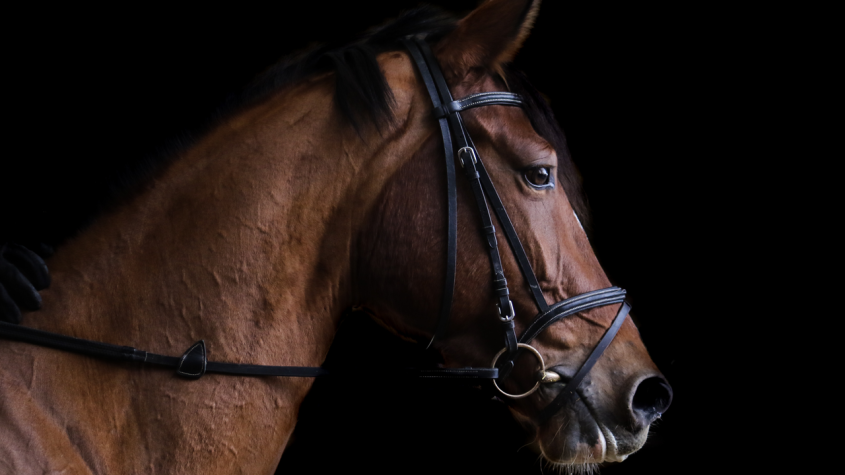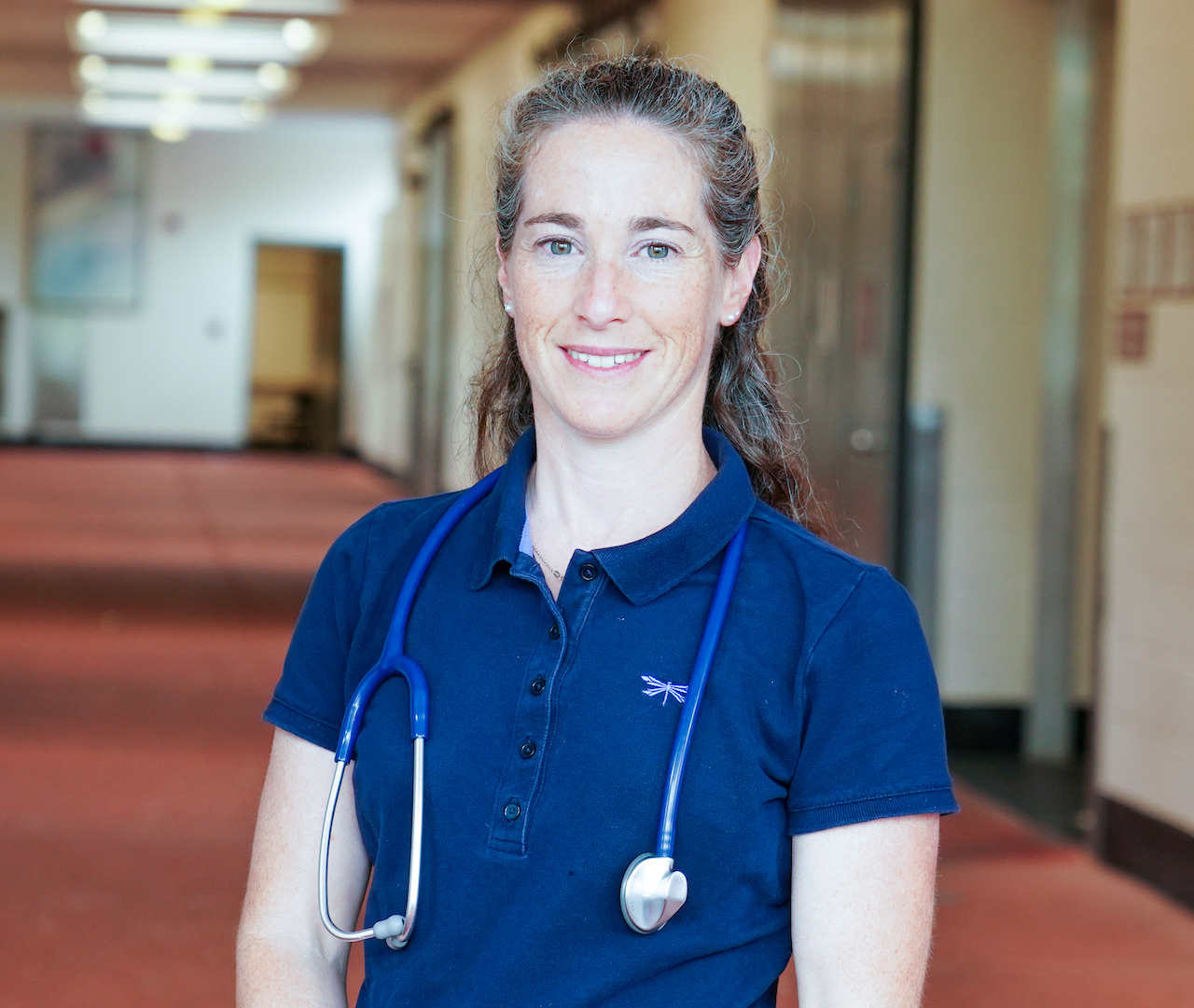Equine wellness: An ounce of prevention is worth a pound of cure
Horse-Unpsplasharylou-fortier1280px.png

Reports of Lyme disease in horses began in the late 1990s, but practitioners have learned more about how the disease affects horses in the last 15 to 20 years. Photo: Marylou Fortier/Unsplash
This article accompanies a Cornell Equine Seminar presented May 24, 2021 by Dr. Toby Pinn-Woodcock, assistant clinical professor in the Department of Population Medicine and Diagnostic Sciences.
As the old adage says, “An ounce of prevention is worth a pound of cure.” This is also true for your horse’s health. Board-certified large animal internal medicine specialist Dr. Toby Pinn-Woodcock explains steps you can take in such areas as preventative medicine, routine veterinary care, nutrition, infectious disease control and animal husbandry to help prevent your horse from getting sick and having medical emergencies.
What follows here is an overview. Please watch Pinn-Woodcock’s entire presentation for more extensive information.
Keys to equine wellness
There are many measures you can take to help your horse stay as healthy as possible. Key areas include preventative medicine and routine veterinary care, along with nutrition, infectious disease control and animal husbandry.
Preventative medicine
It all starts with your horse’s annual wellness visit. Here your veterinarian will perform a thorough physical exam, administer vaccinations, discuss dental care, offer sheath cleanings for geldings, take care of parasite control and give you an opportunity to bring up any concerns.
Physical exam
During the physical exam, the veterinarian assesses your horse’s heart and lungs with a stethoscope — taking vital parameters and listening for cardiac arrhythmia or abnormal lung sounds — checks its body condition, conducts an oral exam, examines hoof health, detects new problems and rechecks chronic conditions.
A horse’s body condition is scored on a scale from one (underweight) to nine (obese). An overweight horse has excessive fat deposits that may be a symptom of metabolic disease, while on an overly thin horse the ribs, withers and hips may be prominent. “With scores far outside of the ideal, we might want to address nutrition or other things with you to bring that horse’s body condition closer to that number five,” says Pinn-Woodcock.

Changes in the horse’s eyes can be difficult for owners to detect in the bright light of the barn aisle or out in the pasture. During the annual visit, the veterinarian can move the horse into a dark stall and use an ophthalmoscope to look for abnormalities such as melanoma or cysts in the corpora nigra.
On the hoof, your veterinarian will typically check for three conditions: Laminitis, white line disease (also known as seedy toe) and thrush.
The Coggins test detects equine infectious anemia, a disease that needs to be monitored and reported to prevent its spread. It causes fever, weight loss and anemia and can result in death. The test is required before interstate travel, exhibitions and competitions that congregate many horses, change of ownership, and sales or auctions.
Sometimes the veterinarian will recommend some screening blood work, for example to assess liver and kidney function in a geriatric horse, to check for deficiencies, or to monitor previously diagnosed conditions such as equine Cushing’s disease (ACTH levels) or equine metabolic syndrome (insulin and leptin).
“By monitoring those diseases during your annual wellness exam you have the opportunity to keep them in check and prevent a health crisis such as a laminitic episode secondary to either of those diseases,” Pinn-Woodcock explains.
Vaccination
A vaccine introduces a disease antigen or foreign substance into the horse’s body in a safe way, usually via intramuscular or intranasal injection. The equine immune system reacts by creating antibodies to protect itself. If the horse becomes exposed to the disease in the future, its body can draw on these antibodies or cell-mediated immunity to fight off infection or at least experience less severe clinical signs.
Foals can begin to receive vaccines between four and six months of age. The vaccines usually require boosters one month after the initial dose. For most diseases, after the initial series, annual boosters are used to maintain immunity.
“But for some horses there will be certain diseases for which they have a higher risk of exposure,” says Pinn-Woodcock. “Your veterinarian may recommend vaccine boosters for these diseases twice annually to make sure the horse is protected.” For example, horses that have a higher risk of exposure to equine influenza because they live in big show barns or travel a lot to competitions may receive the appropriate vaccine more frequently.
The illnesses that make up the “core vaccine diseases” include respiratory viruses, such as equine herpes 1 and 4 and equine influenza; eastern equine encephalitis virus and West Nile virus, which are mosquito-borne and cause neurologic disease; tetanus, which enters from the environment through an open wound; and rabies from infected animals, such as rabid skunks.
Additional vaccines you may consider, depending on where you live, are Potomac horse fever, botulism, strangles and Lyme disease.
Intramuscular vaccines are typically given in the neck within a triangle-shaped area bounded by the cervical spine, nuchal ligament and scapula. Some vaccines are also administered intranasally, using small applicators that allow the veterinarian to support the vaccine up the horse’s long nostril and nasal passage.
Oral exam
Most veterinarians will recommend an oral exam during the annual wellness visit. This sometimes requires sedation so the horse will better tolerate the oral speculum used to open their mouth for a better view.
Compared to horses living in the wild, stabled horses eat softer feed, so their teeth — called “hypsodont” because they erupt continuously throughout their life — are not ground down to the same extent through their circular chewing motion. The veterinarian will look for the resulting sharp enamel points, which can cause ulcers and discomfort in the gums. The points can be filed down with manual or power versions of special tools called “floats.”
Malocclusion, or the misalignment and resulting abnormal contact between opposing teeth, can lead to uneven wear of molar teeth and the development of big hooks.
In “step mouth,” a cheek tooth overgrows because the tooth below is malaligned or missing. This can result in ulcers.
Sheath cleaning
Some geldings may need a sheath cleaning to remove “beans” of clumped dirt and debris that have collected in the cavity at the end of the horse’s penis (urethral fossa). A good time to do this is when the horse is already under sedation for a dental exam. “We try to prevent buildup from becoming so big that it’s compressing the urethra,” Pinn-Woodcock explains. “Should that occur, the horse might start to strain to urinate and act colicky, and that’s an emergency.”
Parasite control
Horses are susceptible to internal parasites living in the GI tract. Heavily parasitized animals with high fecal egg counts may appear healthy but contaminate the pasture with eggs that continue the cycle of infection. “We really want to keep the environment clean so the horses have less exposure,” says Pinn-Woodcock.
The most common internal parasites in horses include nematodes such as strongyles, ascarids, pinworms and bots, as well as cestodes such as tapeworms.
While inside the horse, small strongyle (cyathostome) larvae burrow or “encyst” in the intestinal wall. If many emerge at the same time, they may damage the intestinal wall and cause diarrhea, weight loss and colic. Strongylus vulgaris migrates to and obstructs vessels that supply the GI tract (verminous arteritis), resulting in colic and infection of the abdominal cavity (peritonitis).
Strongyloides westeri is passed to foals from their mother’s milk, so it is important to deworm the dam upon foaling. Infected foals can suffer from diarrhea, weight loss and ill thrift. Foals are also susceptible to ascarids (roundworms). They should be combated with dewormers starting at around one month of age to prevent a buildup. Deworming older foals with a large burden can cause a rapid mass die-off of ascarids, resulting in a spaghetti-like conglomeration of dead worms in the intestinal tract, obstruction and colic. “The prognosis isn’t always great, even with surgery, so we try to prevent this,” says Pinn-Woodcock.
The lifecycle of tapeworms occurs in mites on the pasture. In the horse, they cause obstruction, where the small intestine enters a part of the animal’s GI tract called the “cecum.” Read the label of your dewormer to make sure it contains praziquantel or use double-dose pyrantel pamoate to ward off tapeworms.
Bot fly larvae accumulate in the stomach, while pinworms lay their eggs on the skin around the horse’s anus and cause tail rubbing.
To control parasites, monitor each individual horse’s fecal egg count (FEC). “Keep in mind that a negative fecal does not necessarily mean that the horse has zero parasites,” Pinn-Woodcock notes. Some eggs are shed intermittently, and the fecal provides only a snapshot in time. “But it’s the best tool we have to gauge the parasite burden and guide deworming frequency,” she says.
Deworming protocols are designed based on the number of eggs per gram (EPG) in the fecal egg count. Horses with under 200 EPG of strongyles, for example, are considered low shedders and shouldn’t be dewormed. A moderate (200-500 EPG) to high (500 EPG or more) shedder may require deworming.
Consult your veterinarian to decide on a protocol that avoids creating resistance among the worms on the premise. Some horses, especially geriatric animals, may be more susceptible to parasitism and need to be monitored and dewormed more frequently. Young horses, regardless of FEC, require at least one annual treatment with a product containing praziquantel. If there are any concerns about resistance, a fecal egg count reduction test administered before and two weeks after deworming can show the amount of reduction in FEC — ideally close to 100 percent — and identify any issues.
Nutrition
Good nutrition starts with high-quality hay. Your veterinarian may stick a long tool called a “hay corer” into your bales to collect a representative sample, which can be tested for digestible energy, crude protein, fiber, starch and essential vitamins and minerals.
When giving vitamin and mineral supplements, make sure to follow label instructions. For animals at a healthy weight, pelleted ration balancers are a good option. Note that free choice mineral blocks don’t always provide adequate amounts of essential nutrients and sometimes don’t contain selenium. If you live in a low-selenium region such as New England, check the label to avoid selenium deficiency that can lead to muscle loss, poor performance and weakness and, in foals, to potentially life-threatening “white muscle disease.”
Vitamin E deficiency can also cause poor performance, muscle wasting and neurologic disease. Lush green grass is the best source of natural vitamin E, but in regions with long winters, choose a natural, water-soluble Vitamin E supplement for the best absorption.
Only some horses need grain, such as animals with high levels of work. Older horses with worn teeth who can’t chew hay or grass properly benefit from a complete feed senior grain that soaks nicely into a mash, while horses with metabolic diseases are better off with low-starch grains.
Infectious disease control
Infectious diseases are caused by organisms such as bacteria, viruses, fungi and parasites. When spread from one horse to another by direct or indirect contact, they are considered contagious.
It is difficult to avoid germ sharing between horses. They spend time together on pastures and congregate at shows, and even healthy-looking animals can be “asymptomatic shedders,” spreading contagious bacteria and viruses. “We can’t wrap our horses in bubble wrap, but we do have some tools for prevention,” says Pinn-Woodcock.
The first step is understanding how a horse may get infected. Equine infectious diseases spread by
- fecal-oral transfer (e.g. manure)
- aerosol droplets (e.g. sneezes)
- nose-to-nose contact
- fomites (contaminated objects, e.g. trailers or mucking tools)
You can help prevent diseases from spreading by practicing good biosecurity. Vaccinations, discussed in detail earlier, are an important part of the toolkit.
When a new horse arrives at a farm, especially coming from a large sale or auction, it should spend 30 days — or, at minimum, two weeks — quarantined away from resident horses. To isolate the animal, give it a separate paddock, feed it and clean its stall last after handling all other horses, change clothes afterwards, change gloves between horses or wash or sanitize your hands, and wear separate shoes or use foot baths in a simple bleach solution (10 to 1 ratio of water to bleach).
You may ask visitors coming and going on your farm to take similar precautions. This includes equine professionals such as farriers, trainers and veterinarians, who often stop at several different facilities in a day. “Have a conversation with them about how you want to manage biosecurity on your farm, making sure shoes and hands are clean, hands are washed,” says Pinn-Woodcock. “If they’ve been around a potentially sick horse, maybe they should cancel their visit or make sure they change before they come to your property. You can also provide those professionals with the tools they need, like a nice bucket of clean water.”
When you travel with your horse, take your own equipment as much as possible, including buckets, cleaning tools, grooming supplies and tack. Avoid communal areas such as water troughs and tie rails, and do not allow nose-to-nose contact between your horse and others. Wash your hands after handling another horse, and minimize contact with the manure from other animals, either directly or via fomites.
When a horse does seem sick — perhaps dull and off feed — it can be from any number of causes. “So another aspect of preventing infectious disease is to notice clinical signs as fast as you can, being vigilant, but calling the veterinarian to assess,” Pinn-Woodcock advises. With many clinical signs being non-specific, “the best thing we can do is know our enemy, so the vet might recommend diagnostic testing to understand our problem and know how to best address it.”
You can monitor infectious diseases and learn more about biosecurity practices by visiting the website of the Equine Disease Communication Center.
“There are a lot of aspects that come into play when we’re trying to diagnose, prevent and manage infectious disease,” says Pinn-Woodcock. “You have to have some patience, but hopefully with time you can get to the bottom of it.”
Watch Pinn-Woodcock’s full talk online and see the entire Cornell Equine Seminar Series videos here.




